-
Posts
1,261 -
Joined
-
Last visited
Content Type
Profiles
Forums
Gallery
Events
Posts posted by Bedford
-
-
Mate, it's exquisite. In the second pic you can make out scroll work at the bow, it's duplicated at the stern and it has been suggested it could be 100 years old but I don't know about that as the finish is in beautiful condition.
There appears to be no shrinkage in the deck either as there is absolutely no gap anywhere around the margin. Master craftsman built from excellent quality timber.
It's a real pleasure/honour to be working on it.
- Keith Black, mtaylor and druxey
-
 3
3
-
I've been asked to restore a lovely old pond yacht for display in a local yacht club.
It's beautifully made, the hull is carved from a solid piece of mahogany hollowed out and the deck is another piece of mahogany. Perfectly fitted and screwed down around the margins.
I have no experience with pond yachts so I'm looking for some help with the details.
Specs are:-
- L.O.D. 668mm - 26 1/4"
- Beam 160mm - 6 1/4"
- Mast 843mm - 33 3/16" with lower shroud mast band at 315mm - 12 3/8" high and upper shroud/stay mast band at 618mm - 24 5/16" high
- Boom 493mm - 19 3/8"
- Bowsprit is missing
So the questions so far:-
The rigging left in the mast suggests she was a fractional sloop but I'm not sure if she would have been gaff or Bermudan rigged. There are still two haly'ds at the top of the mast but it looks like there could have been three.
How long should the bowsprit be, its heel, for want of a better word, is 114mm - 4.5" aft of the bow.
There are two sheet horses, each running the width of the deck. 1 for the jib and one for the main. Might she have a club footed jib.
There is no "comb" for setting the tiller and it has no holes in it or any indication it had things connected to it. How did it steer.
I don't need to get her back to true sailing condition but I'd like her to look as close as possible to original and I'm hoping they don't want her stripped back and refinished because she's in gorgeous aged condition.
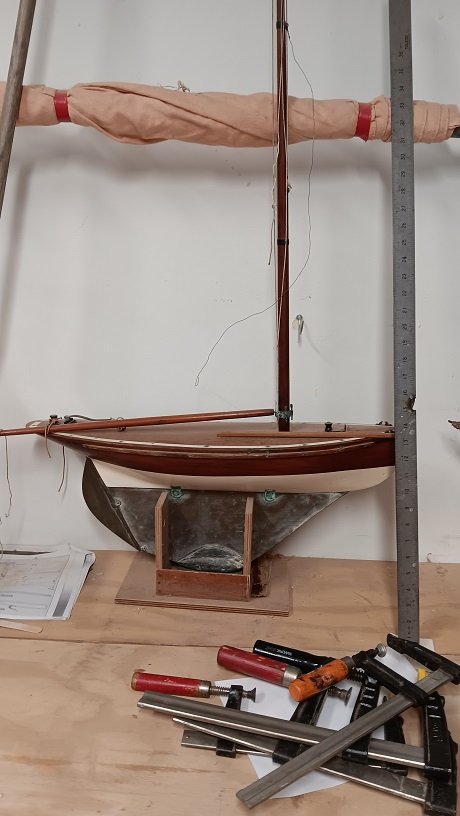
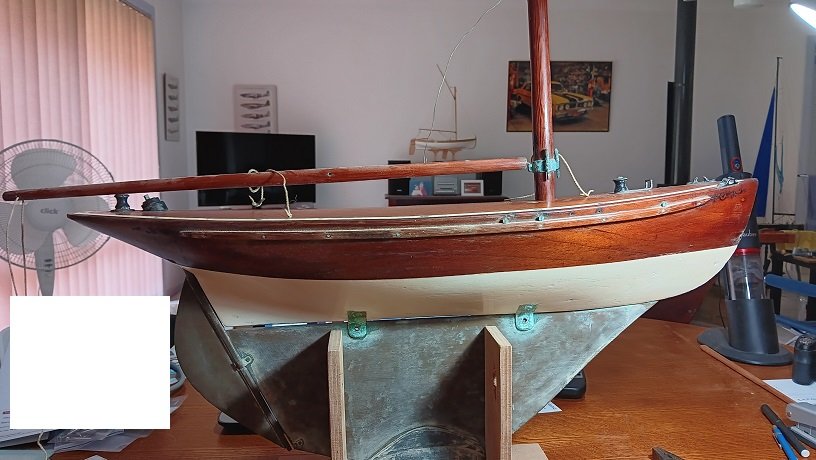
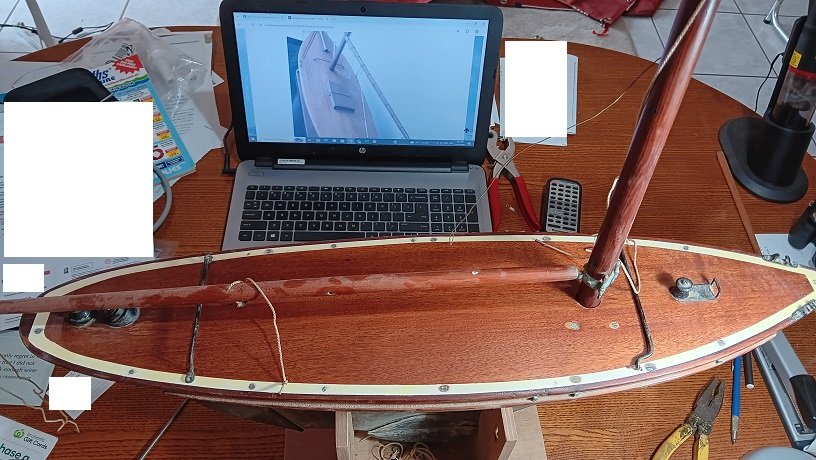
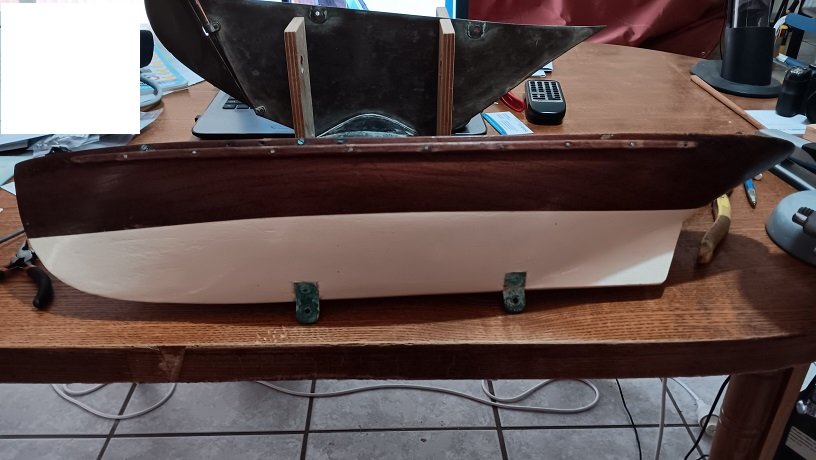
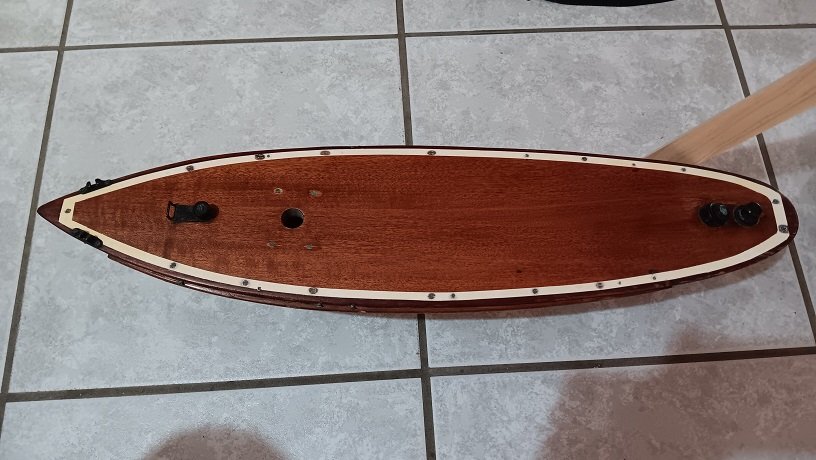
- mtaylor, druxey, Keith Black and 2 others
-
 5
5
-
She look great and the fittings are beautifully made, well done!
- FriedClams, vaddoc, Keith Black and 2 others
-
 5
5
-
She's looking beautiful Mark
I prefer the glue first paint later approach as it's easier to get them positioned properly as you said and easier to glue them on. Masking tape works well and can even be placed on the later painted surface to protect it from fine detail sanding of any paint that bleeds under the tape onto the sponson
- Jack12477, KeithAug, Mark Pearse and 1 other
-
 4
4
-
Looking beautiful Mark
- Jack12477, Mark Pearse, mtaylor and 1 other
-
 4
4
-
More ingenious metalwork and even more to come!
- Glen McGuire, Keith Black, KeithAug and 1 other
-
 4
4
-
Yeah, that'll be it. I can see them wanting to keep tenders etc away from the hull, the boom would let them swing the tender in when they wish to use it
- Keith Black and KeithAug
-
 2
2
-
I'm hopping aboard again too, that's a very pretty and interesting subject for a model.
- mtaylor and Keith Black
-
 2
2
-
As you know, I'm no expert in the field of quadrireme design or use so take this however you chose.
I own a 15 foot Tammie Norrie, a beautiful rowing/sailing dinghy with a bit much freeboard for rowing in windy conditions so I deploy the rudder in such instances.
My oars are 8 feet long so the motive force is at two points 16 feet apart in the water. That's a lot of leverage applied by each oar. To overcome that leverage with a rudder is not easy. I can tell you from experience that the boat can not follow the arc set by the rudder while being rowed. It goes straight and then when oars are lifted for the back sweep it takes the rudder a second or so to overcome the straight line momentum before imparting its influence on the direction of the boat. The boat traces an almost porpoising action but on the horizontal plane.
This is with a full scale rudder in full scale conditions.
Another way to look at it is as a drag car. Imagine a locked differential driving two tyres 4 feet wide and trying to steer with 4 inch front wheels. It ain't going to happen.
The only way I can steer my boat in an arc is by altering the power I apply to the inboard oar and shortening the stroke.
So as I see it you either reprogram to achieve this or make MUCH BIGGER rudders.
-
Beautiful work Mark
You're right about shaping ply, the good marine ply I've used for rudders and keel on my full size builds and the Miss Caroline model were very easy to get right because of the perfect contour lines created by the ply layers
- Jack12477, KeithAug and Mark Pearse
-
 3
3
-
Keith, I don't think you'll have too much trouble making the ply conform as long as the curves aren't too great. We are building a 16 foot sailboat at the boatshed and it's got 6mm ply sheeting that has to bend two ways to meet the curve of the chine. The big thing is being able to pull it in and clamp it effectively and using the right glue.
I suppose you've already considered the joint between the two lengths of ply but in case you haven't I'd be using a scarf joint rather than a butt joint to make the joint easier to hide.
- Keith Black, mtaylor, Ian_Grant and 2 others
-
 5
5
-
On 7/13/2024 at 3:23 AM, druxey said:
Not exactly the usual 'whiskey strake', but have one anyway!
What he said!
Well done, the tedium of planking is behind you, now we look forward to the fancy stuff
- mtaylor, FriedClams, Keith Black and 1 other
-
 4
4
-
Congratulations, a very long project with incredible attention to detail. A masterpiece!
What's next I wonder...
- Ras Ambrioso, FriedClams, mtaylor and 1 other
-
 4
4
-
Chair pulled up, coffee brewing. I'm in for the whole show and looking forward to it
-
That's a beautiful planking job Keith and the steel sanding guide plug is a great tip
- BANYAN, KeithAug, Keith Black and 3 others
-
 6
6
-
Beautifully executed, I love it!
- Egilman, FriedClams, thibaultron and 6 others
-
 9
9
-
-
Always a pleasure to have you back onboard Michael
-
I just found this and will be following along keenly.
When I saw the first pics I thought "I don't remember that model at the museum" now I understand why.
I think I'd much rather build from scratch than alter and complete someone elses project but it must be done and you'll do it beautifully.
- mtaylor and Keith Black
-
 2
2
-
Very nice solution Keith, having the equipment and being able to see unusual ways to use it makes a huge difference doesn't it
- Keith Black, mtaylor, FriedClams and 2 others
-
 5
5
-
The Sutton Hoo ship is very interesting Keith. I'm a member of Lake Macquarie Classic Boat Assoc. we are a similar bunch of "old codgers" who build and restore classic boats but not to that scale or degree of authenticity. I think groups like that are always welcoming and happy to discuss their work.
I can definitely appreciate the amount of waste that would occur cutting their strakes that way but it's authentic.
- KeithAug and FriedClams
-
 2
2
-
Well Keith, I knew this one was coming but I've been so tied up in my 1 : 1 build I forgot all about it but I've had a quick skim through up to present and am now eagerly watching another masterpiece take shape
- Keith Black, FriedClams, KeithAug and 1 other
-
 4
4
-
I think Mark is onto it but the vertical lever is the tiller (side steering) and the half inch rod is a keeper rail to protect it. So bent to 90deg at each end and into the carlin or coaming so the tiller is captive.
I'd guess side steering was the ideal method for a small fishing boat as it leaves the cockpit and the other side of the boat clear to work.
- KeithAug, Mark Pearse, Keith Black and 1 other
-
 4
4
-
That's some nice progress mate, she looks great.
I'm having trouble finding this metal rod of which you speak, is it that dot in way of the rudder head? If so I'd say it's a locking pin to stop the tiller coming off in adverse conditions.
- FriedClams, Keith Black and mtaylor
-
 3
3

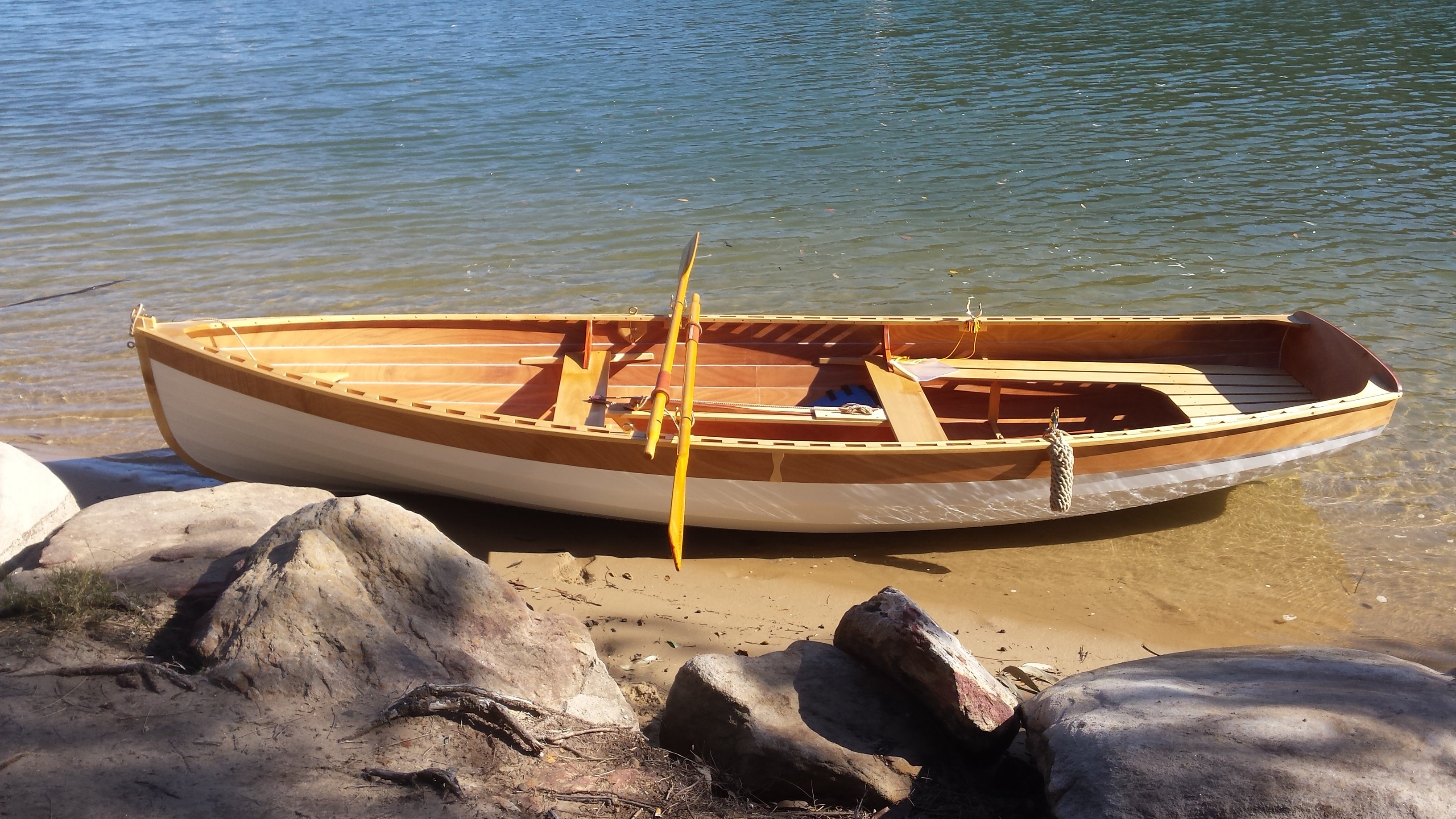


Pond yacht by Bedford - scale unknown - RESTORATION - design unknown
in - Build logs for subjects built 1901 - Present Day
Posted
Hi John
Thanks for the input, I'm pretty well convinced she had a Bermudan mains'l due to the height of the mast and the lack of wear or any other indication of a gaff on the mast.
The rudder turns quite freely so that's still a bit of a mystery. I'm not too worried about it as it'll be fine for display purposes as is.